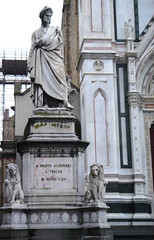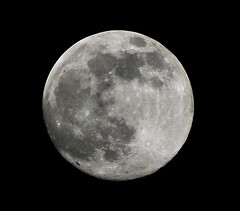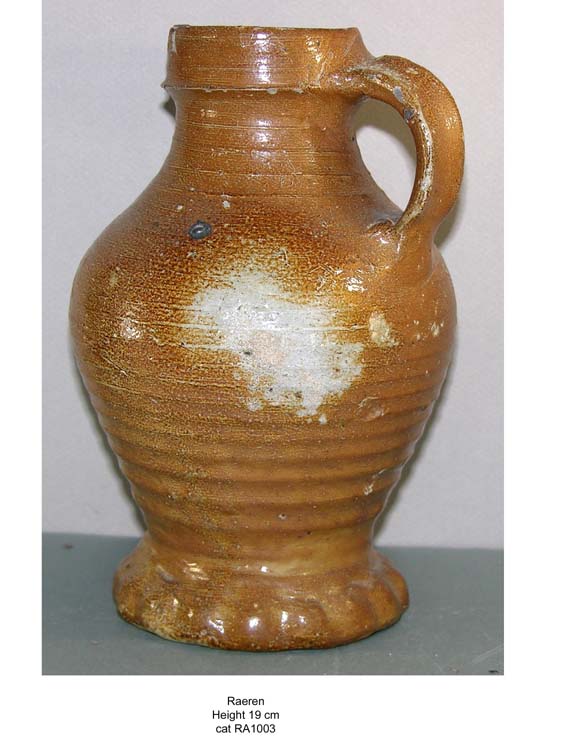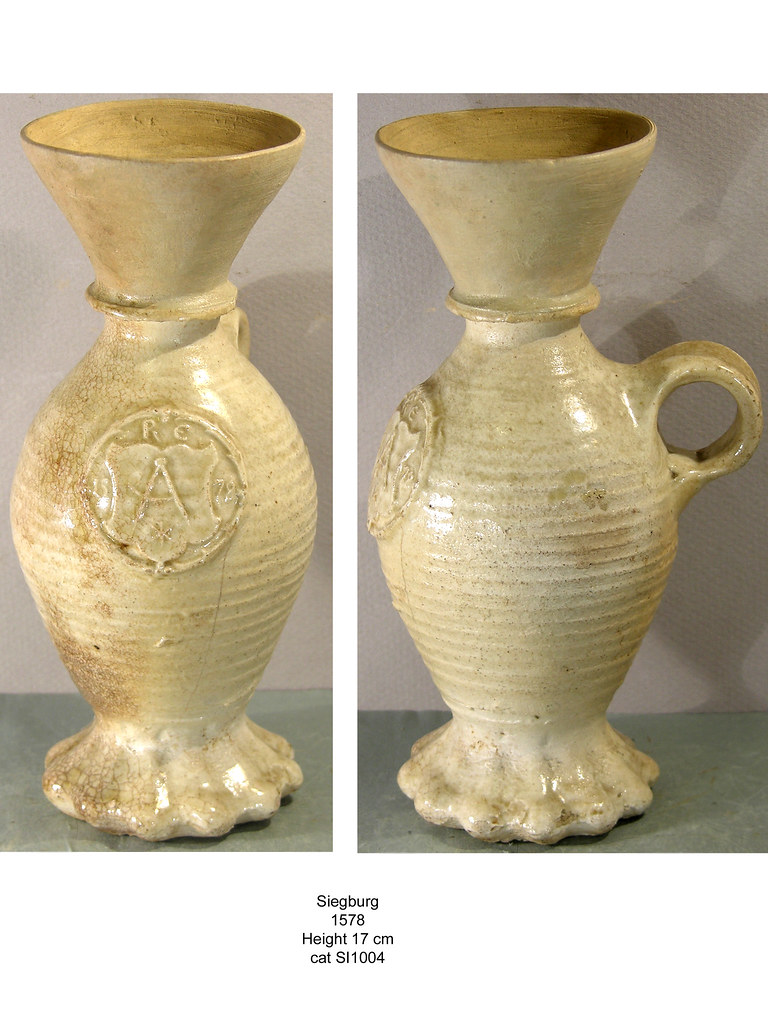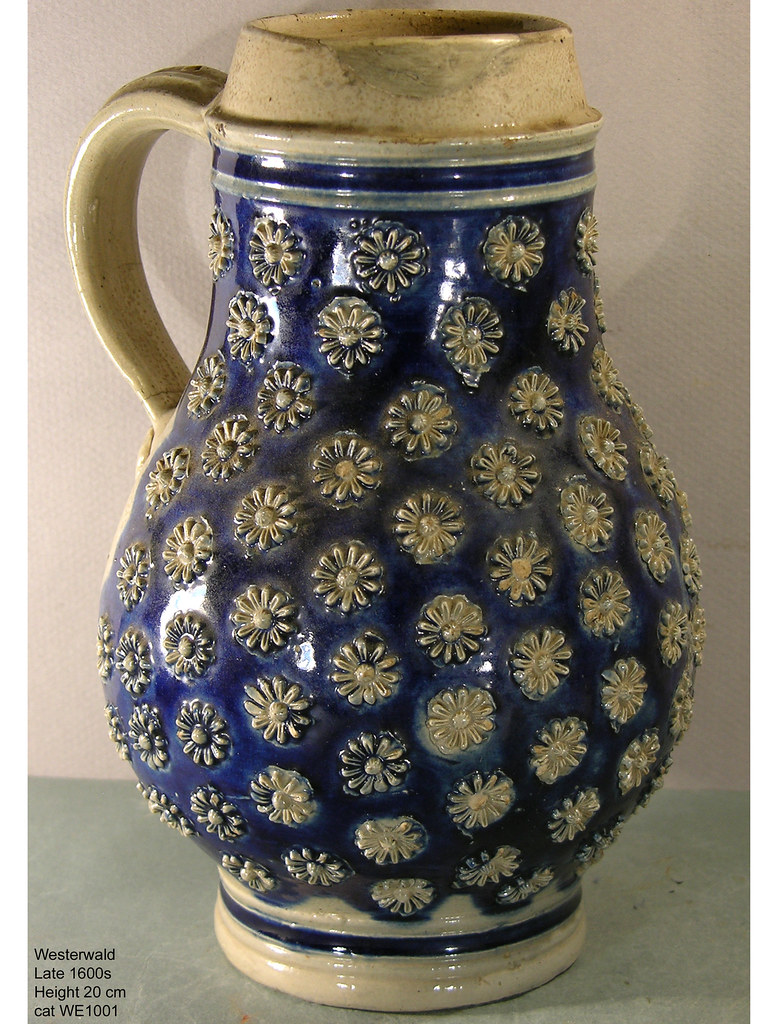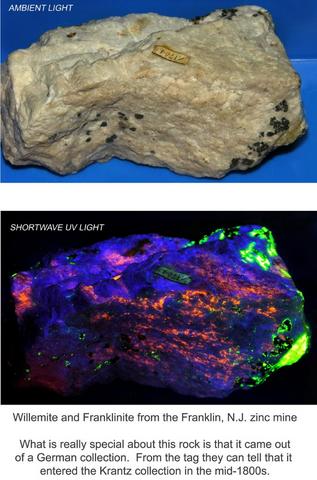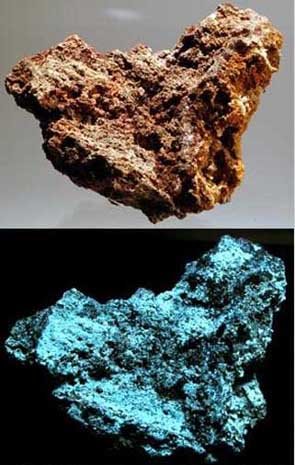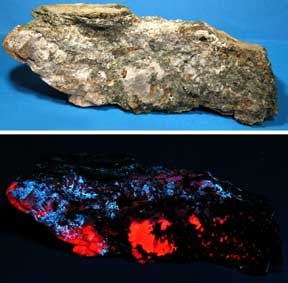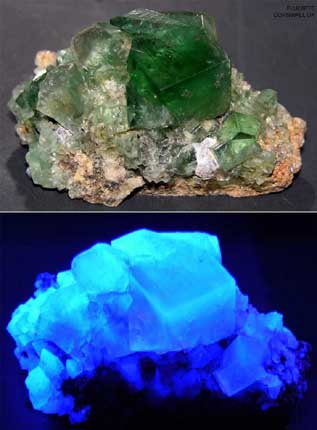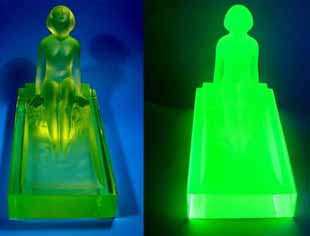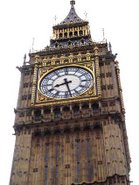The Electromagnetic Spectrum
-
I was watching a great PBS TV show on reading 2,000 year old papyrus which has been damaged. Scientists are now using a NASA imaging technology, using infrared light to read these old documents.
 -
-
So these guys are really turned on by very long wave light. Say infrared light that our eyes can't see, at a wavelength of 950 nano meters (nm). And here me and some of my friends are fascinated by ultraviolet light that is just shorter in wavelength than what the human eye can see. And what happens when you shine this UV on certain minerals. They suddenly light up in the part of the sprectrum that the human eye can see.
-
UV-A is long wave UV light. I call it plain old hippie black light. It is about 400 - 320 nm and the lamps to produce this can be purchased very inexpensively. UV-C is short wave UV light. It can damage your eyes or skin and can even be germicidal. It has a wavelength of around 280 nm, or even shorter.
-
 Amateur radio operators or "Ham radio operators" can relate to how massive an 80 meter 1/2 wavelength dipole antenna is. We can also see that one yard or 3 feet is 36 inches, and one meter is about 39 inches. And amateur radio operators know that the ionosphere easily bounces waves of 20 meters. But that when you get up to the high frequencies (shorter wavelengths) like 10, 6, or 2 meters it is pretty rare for this layer of particles high up in the sky to be sufficiently ionized to act like a mirror.
Amateur radio operators or "Ham radio operators" can relate to how massive an 80 meter 1/2 wavelength dipole antenna is. We can also see that one yard or 3 feet is 36 inches, and one meter is about 39 inches. And amateur radio operators know that the ionosphere easily bounces waves of 20 meters. But that when you get up to the high frequencies (shorter wavelengths) like 10, 6, or 2 meters it is pretty rare for this layer of particles high up in the sky to be sufficiently ionized to act like a mirror.
-
So how long is a nano meter? Most of us can visualize 35 mm and maybe even 16 mm or 8 mm because we used to be into chemical silver based photography. A nano meter is really small. It takes one million nano meters to make one millimeter! So if one were talking about light that has a wave length of 1,000 nano meters, this is one one thousanth of a millimeter. It may be called super long wave length light, but it is still really quite small.
-
Here is the real interesting concept and little bit of a surprise. Light, X-rays, AM and FM radio waves, cellphone tower output, the dangerous radiation inside of your microwave oven that heats things up, and even television transmissions are all just light. Just like what our eyes see, only at different frequencies (colors you could say) that our eyes cannot decode (see). So there are indeed lots of things happening around us that we cannot see. Seeing is believing. Well, maybe. Think about the concept of parallel universes in this context.
-
This picture of the spectrum came from wilkpedia, and I have modified it slightly to make my point. Click on it and it should enlarge enough that you can read it.
-
-
I was watching a great PBS TV show on reading 2,000 year old papyrus which has been damaged. Scientists are now using a NASA imaging technology, using infrared light to read these old documents.
 -
-So these guys are really turned on by very long wave light. Say infrared light that our eyes can't see, at a wavelength of 950 nano meters (nm). And here me and some of my friends are fascinated by ultraviolet light that is just shorter in wavelength than what the human eye can see. And what happens when you shine this UV on certain minerals. They suddenly light up in the part of the sprectrum that the human eye can see.
-
UV-A is long wave UV light. I call it plain old hippie black light. It is about 400 - 320 nm and the lamps to produce this can be purchased very inexpensively. UV-C is short wave UV light. It can damage your eyes or skin and can even be germicidal. It has a wavelength of around 280 nm, or even shorter.
-
 Amateur radio operators or "Ham radio operators" can relate to how massive an 80 meter 1/2 wavelength dipole antenna is. We can also see that one yard or 3 feet is 36 inches, and one meter is about 39 inches. And amateur radio operators know that the ionosphere easily bounces waves of 20 meters. But that when you get up to the high frequencies (shorter wavelengths) like 10, 6, or 2 meters it is pretty rare for this layer of particles high up in the sky to be sufficiently ionized to act like a mirror.
Amateur radio operators or "Ham radio operators" can relate to how massive an 80 meter 1/2 wavelength dipole antenna is. We can also see that one yard or 3 feet is 36 inches, and one meter is about 39 inches. And amateur radio operators know that the ionosphere easily bounces waves of 20 meters. But that when you get up to the high frequencies (shorter wavelengths) like 10, 6, or 2 meters it is pretty rare for this layer of particles high up in the sky to be sufficiently ionized to act like a mirror.-
So how long is a nano meter? Most of us can visualize 35 mm and maybe even 16 mm or 8 mm because we used to be into chemical silver based photography. A nano meter is really small. It takes one million nano meters to make one millimeter! So if one were talking about light that has a wave length of 1,000 nano meters, this is one one thousanth of a millimeter. It may be called super long wave length light, but it is still really quite small.
-
Here is the real interesting concept and little bit of a surprise. Light, X-rays, AM and FM radio waves, cellphone tower output, the dangerous radiation inside of your microwave oven that heats things up, and even television transmissions are all just light. Just like what our eyes see, only at different frequencies (colors you could say) that our eyes cannot decode (see). So there are indeed lots of things happening around us that we cannot see. Seeing is believing. Well, maybe. Think about the concept of parallel universes in this context.
-
This picture of the spectrum came from wilkpedia, and I have modified it slightly to make my point. Click on it and it should enlarge enough that you can read it.
-
-
